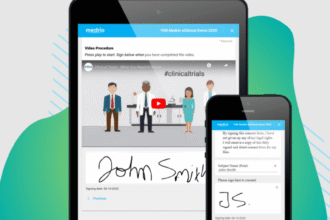Tire Pressure Monitoring Systems (TPMS) have come a long way since their introduction. Proper tire pressure is vital for optimal performance, fuel efficiency, and safety. However, keeping track of tire pressure manually can be a daunting task. It is where TPMS technology comes to the rescue. In this article, we will explore the evolution of TPMS technology, its benefits, how it works, and the future trends in this field. So, let’s dive in and understand the fascinating journey of TPMS!
What is a Tire Pressure Monitoring System (TPMS)?
A TPMS technology monitors the air pressure inside vehicles’ tires and alerts the driver if the pressure falls below or exceeds the recommended levels. It helps prevent accidents, reduces tire wear, improves fuel efficiency, and provides a comfortable driving experience.
Evolution of TPMS technology
First-generation TPMS
The first-generation TPMS systems were introduced in the late 1980s. These systems utilized a low-frequency radio transmitter mounted on the tire’s valve stem. The transmitter sent signals to a vehicle receiver, alerting the driver if the tire pressure was low. While these systems were a step forward in tire pressure monitoring, they had limited accuracy and functionality.
Direct TPMS
Direct TPMS, also known as active TPMS, was introduced as an improved version of the first-generation systems. Each tire is equipped with a sensor that directly measures the tire pressure and temperature in this technology. These sensors transmit real-time data to the TPMS control unit, which interprets the information and alerts the driver if any tire pressure anomalies are detected. GUTA TPMS provides more accurate and reliable readings compared to first-generation systems.
Indirect TPMS
Indirect TPMS, or passive TPMS, takes a different approach to monitoring tire pressure. Instead of individual sensors, it relies on the wheel speed sensors already in the vehicle’s Anti-lock Braking System (ABS). The system compares the rotational speeds of the tires to detect any significant deviations, which may indicate low tire pressure. While indirect TPMS is less accurate compared to direct TPMS, it is a cost-effective alternative for vehicles that don’t have direct TPMS installed.
Advanced TPMS
Recent advancements in TPMS technology have led to the development of advanced TPMS systems. These systems combine the benefits of direct and indirect TPMS, providing more accurate readings and enhanced functionality. Advanced TPMS can monitor tire pressure, tire tread depth, tire wear, and even punctures or leaks. These systems offer comprehensive monitoring and advanced warning capabilities, ensuring maximum safety and performance.
Benefits of TPMS
TPMS technology offers numerous benefits to both drivers and vehicle manufacturers. Some of the key advantages include:
- Improved safety by alerting drivers of low tire pressure or potential tire failures.
- Enhanced fuel efficiency by maintaining optimal tire pressure and reducing rolling resistance.
- Extended tire life by preventing underinflation or overinflation, which can lead to uneven wear.
- Reduced carbon emissions due to improved fuel efficiency, resulting in a smaller carbon footprint.
- Enhanced handling and stability by ensuring proper tire inflation, especially during challenging driving conditions.
- Cost savings through improved fuel economy and reduced tire wear.
How TPMS works
TPMS systems consist of several components that work together to monitor tire pressure. Here’s a simplified explanation of how TPMS works:
- Sensors: Each tire has a sensor that measures tire pressure and temperature. These sensors can be direct (mounted on the tire valve stem) or indirect (utilizing wheel speed sensors).
- Data transmission: The sensors transmit real-time data wirelessly to the TPMS control unit.
- TPMS control unit: This unit receives and interprets the data from the sensors. It compares the readings with the recommended tire pressure levels and triggers alerts if any anomalies are detected.
- Alert display: The TPMS control unit sends alerts to the driver through a dashboard display or a warning light. Some advanced systems also provide detailed information about specific tire pressure readings.
- Driver response: Upon receiving an alert, the driver can take appropriate action, such as checking tire pressure, inflating or deflating tires, or seeking professional assistance.
Common TPMS sensors
TPMS sensors play a crucial role in accurate tire pressure monitoring. There are two primary types of sensors used in TPMS systems:
- Direct TPMS sensors are mounted on the tire valve stems or integrated with the tire pressure valve. They directly measure tire pressure and temperature, providing accurate and real-time data.
- Indirect TPMS sensors utilize the existing wheel speed sensors in the vehicle’s ABS. They indirectly monitor tire pressure by analyzing the rotational speeds of the wheels. While less accurate than direct sensors, they offer a cost-effective alternative for vehicles without direct TPMS.
Challenges and limitations of TPMS
While TPMS technology has revolutionized tire pressure monitoring, there are some challenges and limitations to be aware of:
- Sensor battery life: TPMS sensors are powered by batteries that have a limited lifespan. Over time, the batteries may require replacement, and the sensors need to be recalibrated.
- Sensor calibration: TPMS sensors need to be calibrated to ensure accurate readings. Incorrect calibration can lead to false alerts or inaccurate tire pressure measurements.
- Sensor compatibility: Not all TPMS sensors are compatible with every vehicle’s make and model. When replacing sensors, it’s essential to ensure compatibility and follow manufacturer guidelines.
- Temperature fluctuations: Extreme temperature changes can affect tire pressure readings. It’s crucial to consider temperature variations when interpreting TPMS data.
- Sensor maintenance: TPMS sensors may get damaged or require maintenance due to road hazards like potholes or debris. Regular inspection and maintenance are necessary to ensure optimal system performance.
Future trends in TPMS technology
TPMS technology continues to evolve, and future advancements hold exciting possibilities. Some potential trends to watch out for include the following:
- Smart connectivity: Integration with vehicle systems and smartphones, allowing drivers to monitor tire pressure remotely and receive real-time alerts.
- AI and predictive analytics: Advanced algorithms and AI-driven analytics to predict tire failures, detect abnormalities, and provide proactive maintenance suggestions.
- Wireless charging: Development of wireless charging technology for TPMS sensors, eliminating the need for battery replacement.
- Integration with autonomous vehicles: TPMS systems that can communicate directly with autonomous vehicle systems for enhanced safety and performance.
- Multi-sensor capabilities: Integration of additional sensors to monitor factors like tire tread depth, tire wear, and road conditions, providing a comprehensive picture of tire health.
Conclusion
The evolution of Tire Pressure Monitoring Systems (TPMS) technology has significantly improved vehicle safety, fuel efficiency, and tire performance. With ongoing advancements, TPMS systems will continue to play a vital role in ensuring optimal tire pressure and enhancing the overall driving experience.















